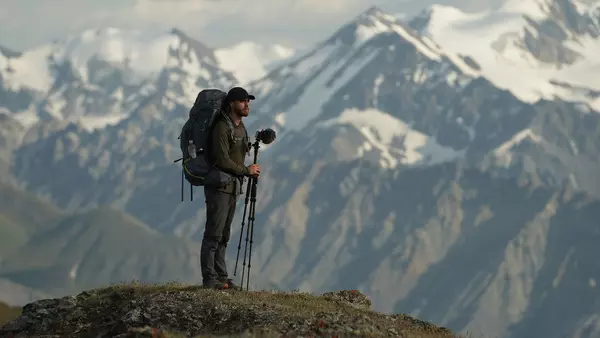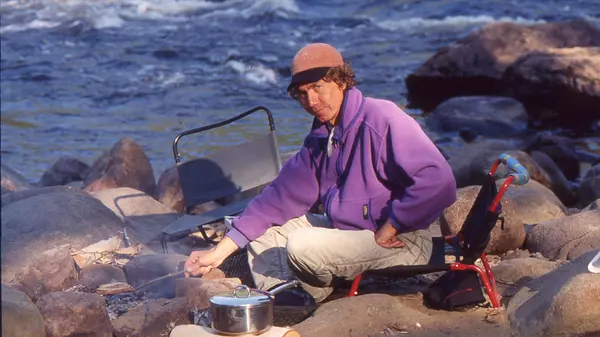Tasting the country is an aspect of travel that we always have a lot of interest and curiosity to discover! Generally, it has to be said that Bolivia is not recognized for satisfying the great culinary epicures of the world... The "papa" which means potato, in Bolivia, we ate it all the time. While we know up to 700 varieties of potatoes, the papa is VERY popular, practically as much as rice, quinoa... served with grilled meat! Let's revisit together our best food discoveries in Bolivia.

Comforting good meals... in Bolivia!
Our culinary baptism began in the city of Sucre, renowned for its gastronomy, where we ate very well. We indulged ourselves in good, beautiful, cheap and not destabilizing restaurants! On the menu: pasta, grilled chicken, burgers, all kinds of soups, "pollo" (chicken) sandwiches. Sucre will have marked us with its shared moments around comforting good meals. Like this Italian discovery in the heart of the "Centro", with the best view in town! With a succulent pizza and a Bolivian rosé in hand, we didn't even feel the altitude anymore, we were so good!

In Bolivia, vineyards can be found in the province of Cercado/Tarija, a continuity of Argentina, still unknown, but yet. All wines cost between 16 and 22 Canadian dollars at the restaurant. According to our last six months of research, no Bolivian wine can be found on the shelves of the SAQ, unfortunately.
Did you know?
When reading about Bolivia, one understands that sanitation is not equal everywhere and one must be careful. Moreover, one of the received advice is to look at the bathrooms to see if the restaurant is clean. Honestly, we wouldn't have eaten on the trip if we had to find a respectable toilet. We quickly understood that despite our precautions, our North American stomachs were not going to be spared... We will tell you about our adventure in another blog post!

Discover the typical dish of Bolivia: the "Saltenas"
The Saltenas is probably the most succulent typical dish we have eaten during our trip. Very popular, you can see it everywhere for the price of 20 BoB for 4 (5$ Canadian to feed the whole family!). I would describe it as a small chicken, meat, or vegetarian pie with vegetables, potatoes, and broth in the form of a pocket pizza, where the dough is slightly sweet. Whether it's for Sunday lunch, afternoon snack, or dinner, we quickly realized we could eat it anytime! The presentation remains very simple from one restaurant to another: there is only a small pie alone in the plate. To eat slowly, with a small spoon... because the broth runs a lot!
Survival mode eating
When we arrived in the mountains of Potosi, we were struck by a different reality: eating was more of a survival mode. To put it in the words of the Lonely Planet, the gastronomic choices were as limited as the oxygen in the air... This transition was anything but comfortable!
Our stay was marked by the search for restaurants... which was no small task. Several were closed or the listed hours were not up to date.
What to say about the included lunch of our accommodation. I wondered if there were hidden cameras, so disappointing was the result on the plate. In one word: meager! Dry bread, frozen butter, and a sip of juice (Tang). As my darling would say, it was quite a "balanced lunch" (laughs). On top of that, the room was 2 degrees. Hahaha!! Better to laugh at it!

Bolivia: The world's largest quinoa exporter
The opportunity for our family to taste quinoa for the first time presented itself! It should be noted that Bolivia is the world's leading quinoa exporter. It is called the gold grain of the Andes, as this plant grows up to a maximum of 4300 in altitude.

Hats off to our "cook", Pamela!
Throughout the Grand Lipez and Uyuni tour, we ate like kings and queens.
Pamela cooked us meals full of love and vitamins while introducing us to some typical local dishes like "milanesa" de pollo, which is breaded chicken served with rice, potatoes, and salad, or "majadito", a dish made of fried rice mixed with dried meat. There was also "pique Macho" on the menu, with beef, sausages, peppers, sauce... and all served with fries... As for drinks, there was of course the star of the show, Coca-Cola! We had a special love for the Bolivian "bunuelos" that she cooked us one cold morning when we were having breakfast in the unheated accommodation. It's a kind of naan bread, fried with or without sugar. Since I was wearing gloves, I didn't think of taking a picture (😂) but it was delicious.

Mate: A comforting dose against arid and windy winter
Mate is very popular there and especially was really welcomed during our expedition which took place between 5 degrees to -20 at night. Tea time at the end of the day warmed not only our bodies but also our souls! We discovered the "Pupusa Mate" plant - tea that we consumed every day, recognized for its benefits against headaches, stomach, and altitude ... it was divinely good! Its herbaceous taste reminded me of the conifer, the spruce and the fir ... It looks like the end of the branch.
Meal cost examples
1. Three lunches to share for a St-Hubert style dinner in Tupiza with chicken, fries, rice, and pasta instead of coleslaw. The chicken was cooked directly on the grill in front of us and we had the choice of a quarter, a half, or a whole. The bill? $70 Bob, or $15 Canadian to feed 4 people.
2. A family dinner with two chicken sandwiches, a giant submarine, and four soft drinks for 50 bobs with the tip, or $10 Canadian for the family. If we compare our son's grilled chicken sandwich at Subway, it's a bargain!
3. The cost of the family Italian dinner with pizza and lasagna has risen to $56 Canadian for 4 people, including the bottle of wine and the tip.
4. We visited the OnGastroBar, a chic and renowned place. My boyfriend would say he tasted the best cocktail of the whole trip! It was the last dinner of the D'Amours-Roy before entering the lands. For two Signature cocktails, 2 non-alcoholic daiquiris, 2 glasses of white wine, and then 4 meals, we are talking about more or less $64, tip included. It was clear that every time we added beverages and alcohol to our meals, the bill skyrocketed.

The typical soup: the reward!
During our stay in Uyuni, we were treated to a special corn soup called K'alaphurka. The soup contains a hot volcanic stone that causes bubbling when served. It was a delight to the eyes and taste buds! My partner took the opportunity to try his first meal of Lama meat, which was also excellent. The glass of white wine was also very good after several days of abstinence!
Grilled meat: Bolivian queen
We have noticed that grilled meat is very popular in Bolivia! Everywhere we went, we found butchers, grills, or rotisseries that lined the streets. It must be said that in Tupiza, in the Bolivian Far West, meat is omnipresent on the menu. Butchers (the cleanest we have seen elsewhere) are numerous! The fact that we have noticed, is we are not used to big food and a lot of meat! The cook found that we did not eat much ... It must also be said that in more than half of our expedition, our gastric health was not at its best.
Finally, there are a lot of typical drinks and lunches served directly in the street food places ... Places that did not inspire us, where we did not want to make an effort to contract bacteria.
The Quebec meals we missed the most
- A comforting spaghetti (Coach).
- Raw vegetables and my homemade dip (Émile).
- A homemade poutine and a hummus snack (Marie-Ève).
- Mom's homemade orzo and tomato soup (Clarence).
Culinary Love
- Gastro On's hamburger and lunches, with lots of fruit. (Émile)
- Croissant, ham, and aged cheese from Sucre (Clarence)
- Pamela's vegetable soup.
- Every night we had our comforting vegetable soup (Marie-Ève)
- Salteñas, without a doubt! (Coach)
Blog
See all articlesSign up to get 10% off your first order.
A confirmation email containing your promotional code will be sent to you. If you cannot find it in your inbox, please check your spam folder.
By subscribing, you accept that we will send you emails concerning promotions, events, products and other exclusive advantages that are only available to our subscribers.





